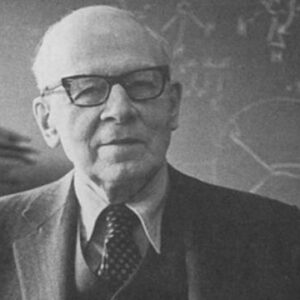Robert Sanderson Mulliken was an American physicist and chemist who won the 1966 Nobel Prize in Chemistry for his work on molecular structure. Mulliken began working on the theory of molecular structures in 1920 and devoted the remainder of his life to electron and quantum theory, primarily developing ‘Molecular Orbital Theory,’ a method for computing the structure of molecules. Mr. Molecule was his affectionate moniker. Mulliken is credited with co-founding Theoretical Quantum Chemistry with Linus Pauling. He was instrumental in establishing the fundamental concepts of molecular structure, as well as its terminology and spectra. His field of study encompassed two significant scientific disciplines, which explains why he alternated between physics and chemistry. Thus, he has carved out a space for mathematics and computer science to contribute to his research. Mulliken’s field of expertise was so complex that when he received the Nobel Prize, he made no attempt to explain his work to the audience in layman’s terms. He also played a role in the development of the atomic bomb during World War II.
Childhood & Adolescence
Robert Mulliken was born on June 7, 1896 in Newburyport, Massachusetts to Samuel Parsons and Katherine W. Mulliken. Samuel Mulliken was a Massachusetts Institute of Technology professor of Organic Chemistry (MIT).
He assisted his father with the editing of his four-volume text book ‘Organic Compound Identification’ and eventually became an expert in organic chemistry nomenclature.
Mulliken possessed both a brilliant and selective memory as a child. For example, he could name plants botanically but couldn’t recall his favorite German high school teacher.
Mulliken graduated from high school in 1913 and was awarded a scholarship to attend MIT, similar to the one his father received during his education. He, like his father, majored in chemistry. In 1917, he earned a B.S. in chemistry from MIT.
Career of Robert S. Mulliken
In 1917, the United States had just entered World War I, and Mulliken obtained employment with the United States Bureau of Mines as a Junior Chemical Engineer during the war. At the time, he was also conducting research on poisonous gases at the American University in Washington, D.C.
Mulliken worked as a chemist at the New Jersey Zinc Company for a year following the conclusion of World War I in 1918.
He soon realized that this was not what he desired and left the job in 1919 to pursue a PhD at the University of Chicago.
He received his doctorate in 1921 for his research on the evaporation separation of Mercury isotopes. He continued his research on isotopes until he attended a course taught by Nobel laureate physicist Robert A. Millikan, which sparked his interest in quantum theory.
Mulliken traveled to Europe in 1925 and spent the next two years working on Quantum Mechanics with leading scientists of the time such as Erwin Schrodinger, Max Born, Werner Heisenberg, and others.
For the next three years, beginning in 1926, he taught physics at New York University. This was his first recognition as a physicist, despite the fact that he was a chemistry major.
In 1929, he returned to the University of Chicago as an Associate Professor of Physics, later becoming a Professor in 1931. He continued to research and refine the theory of molecular orbitals.
He was elected to the National Academy of Sciences in 1936. He was the organization’s youngest member at the time.
Significant Works of Robert S. Mulliken
Mulliken collaborated with Friedrich Hund in 1927 to develop the Hund-Mulliken theory.
Additionally, he invented the ‘Mulliken Population Analysis,’ a technique for assigning charges to atoms in a molecule.
He developed a method for determining the electro negativity of elements in 1934. Although not as well-known as Pauling’s electro negativity, which is included in textbooks, it is considered by experts to be a more accurate indicator of the electro negativity property.
During World War II (from 1942 to 1945), he worked on the Manhattan project and was appointed Director of the University of Chicago’s Plutonium Project’s Information Division.
Awards and Accomplishments
Mulliken was awarded the 1966 Nobel Prize in Chemistry for his ‘fundamental work on chemical bonds and the electronic structure of molecules using the molecular orbital method.’
In 1983, he was awarded the American Chemical Society’s (ACS) Priestly medal, the society’s highest honor for distinguished service in chemistry.
Mulliken has also been recognized with numerous awards and honors from a variety of universities throughout the world.
Personal History and Legacies
On December 24, 1929, he married Mary Helen Von Noe. They are the parents of two daughters. Helen Mulliken died in 1975.
Mulliken died of a cardiac arrest on October 31, 1986, at his daughter’s home in Arlington, Virginia.
His daughter Lucia Maria, two grandchildren, and two great grandchildren survive him.
Estimated Net Worth
Robert S. Mulliken’s net worth and salary were not disclosed. Mulliken, Robert S., is a physicist with a net worth of $13 million. Mulliken, Robert S., was born on June 7, 1896. A physicist from the United States who won the 1966 Nobel Prize in Chemistry for developing molecular orbital theory. When he became a member of the National Academy of Sciences in 1936, he was the academy’s youngest member.


